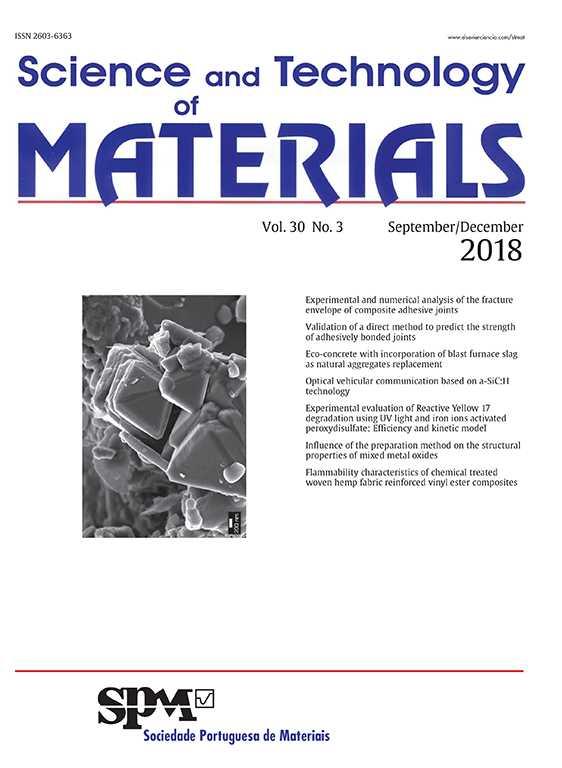[1]R.M. Rowell, Chemical modification of wood: a review. Commonwealth Forestry Bureau, Oxford, v.6, n.12, p.363-382, 1983.
[2]C.A.S. Hill, Wood modification chemical, thermal and other processes. John Willey & Sons, Ltd, England, ISBN 13:978-0-470-02172-9, 2006.
[3]M. Norimoto, J. Gril, R.M. Rowell.
Wood Fiber Sci., 24 (1992), pp. 25-35
[4]Wood Sci. Technol, 27 (1993), pp. 347-355
[5]A. Krause, M. Zee, D. Jones, H. Militz, Proceedings of the 1st European Conference on Wood Modification, Ghent Belgium, 2003, pp. 319-324.
[6]S. Schaffert, A. Krause, H. Militz, Proceedings of the 2nd European conference on wood modification, Göttingen, Germany, 2005, pp. 161-168.
[7]F. Wepner, H. Militz, Proceedings of the 2nd European conference on wood modification, Göttingen, Germany, 2005, pp. 169-177.
[8]S. Bollmus, Biologische und technologische eigenschaften von buchenholz nach einer modifizierung mit 1,3-dimethylol-4,5-dihydroxyethyleneurea (DMDHEU). PhD dissertation, Georg-August-Universitat Goettingen, Germany, ISBN 978-3-86955-653-6 (in German), 2011.
[9]A.G. Pfeffer, Effect of water glass, silane and DMDHEU treatment on the colonisation of wood by sapstaining fungi. PhD dissertation, Georg-August-Universitat, Göttingen, Germany, ISBN 978-3-86955-653-6, (in English), 2011.
[10]S. Donath, H. Militz, C. Mai.
Wood Sci. Technol, 38 (2004), pp. 555-566
[11]H. Epmeier, M. Westin, A. Rapp.
Scand. J. Forest Res, 19 (2004), pp. 31-37
[12]A. Krause, C. Hof, H. Militz, Proceedings of the 35th International Research Group on Wood Protection IRG/WP 04-40285, Ljubljana, Slovenia, 2004.
[13]A. Krause, H. Militz, Proceedings of the 2th European Conference on Wood Modification, Göttingen, Germany, 2005, pp. 289-294.
[14]O. Weigenand, C. Mai, M. Babiak, H. Militz, Proceedings of the 2th European Conference on Wood Modification, Göttingen, Germany, 2005, pp. 295-297.
[15]A. Krause, F. Wepner, C. Mai, H. Militz, Tor Schultz, Darrel Nicholas, Holger Militz, Michael H Freeman, Barry Goodell (Eds.), ISBN 13: 9780841239517, 2008, Chapter 21, pp. 481-503.
[16]H. Militz, S. Schaffert, B. Peters, C. Fitzgerald, Proceedings of the 39th International Research Group on Wood Protection IRG/WP 08-40401, Istanbul, Turkey, 2008.
[17]G. Scholz, A. Krause, H. Militz, Proceedings of the 4th European Conference on Wood Modification, Stockholm, Sweden, 2009, pp. 209-212.
[18]A. Krause, Holzmodifizierung mit N- Methylolvernetzern. PhD dissertation, Georg-August- Universitat, Göttingen, Germany (in German), 2006.
[19]EN 84, Determination of leaching of chemical impregnated into wood. European Committee For Standardization, July, 1997.
[20]Holzforschung, 50 (1996), pp. 457-462
[21]A.N. Papadopoulos, S. Avramidis, D. Elustondo.
Wood Sci. Technol, 39 (2005), pp. 99-112
[22]M.V. Bastías, A. Cloutier.
Maderas Cienc. Tecnol, 7 (2005), pp. 145-158
[23]A.J. Hailwood, S. Horrobin.
Trans. Faraday Soc, 42 (1946), pp. 84-102
[24]Ficha T. M9 Humidade na madeira. Fichas Técnicas, Laboratório Nacional de Engenharia Civil, Portugal (in Portuguese), 1997.
[25]NP EN 4305, Madeira serrada de pinheiro bravo para estruturas. Classificação visual. Instituto Português da Qualidade, Lisboa – Portugal, 1995.
[26]R.M. Rowell, in: Rowell RM (Eds.) Chemical modification of lingo-cellulosic materials. Marcel Dekker, New York, 2005, pp. 77-98.
[27]R.M. Rowell, in: Rowell RM (Ed.) Chemical modification of lignocellulosic materials, Marcel Dekker, New York, 1996, pp. 295-310.
[28]A. Dieste, Wood water relationships in wood modified with 1.3-dimethylol-4.5-dihydroxyethyleneurea (DMDHEU). PhD dissertation, Georg-August-Universitat Goettingen, Germany, 2009.
[29]B.M.M.L. Esteves, Melhoramento tecnológico por modificação térmica de madeiras Portuguesas. PhD dissertation, Universidade Técnica de Lisboa, Instituto Superior de Agronomia, Lisboa, Portugal (in Portuguese), 2006.
[30]H. Epmeier, M. Johansson, R. Kliger, M. Westin.
Holzforschung, 61 (2007), pp. 34-42
[31]Wood Sci. Technol, 34 (2000), pp. 39-43
[32]W.J. Homan, F. Bongers, Proceedings of the Final Workshop COST Action E22 Environmental Optimisation of Wood Protection, Estoril, Portugal, 22-23 March, 2004.
[33]S. Lande, M. Westin, M. Schneider.
Scand. J .Forest Res, 19 (2004), pp. 22-30
[34]DIN 52182, Prüfung von holz. Bestimmung der rohdichte. Beuth, Berlin (in German), 1976.
[35]EN 275, Wood preservatives. Determination of the protective effectiveness against marine borers. European Committee for Standardization, July, 1992.
[36]D.B. Lopes, C. Mai, H. Militz, Mechano-sorptive creep of Portuguese pinewood chemically modified. Unpublished manuscript.





